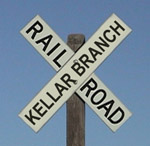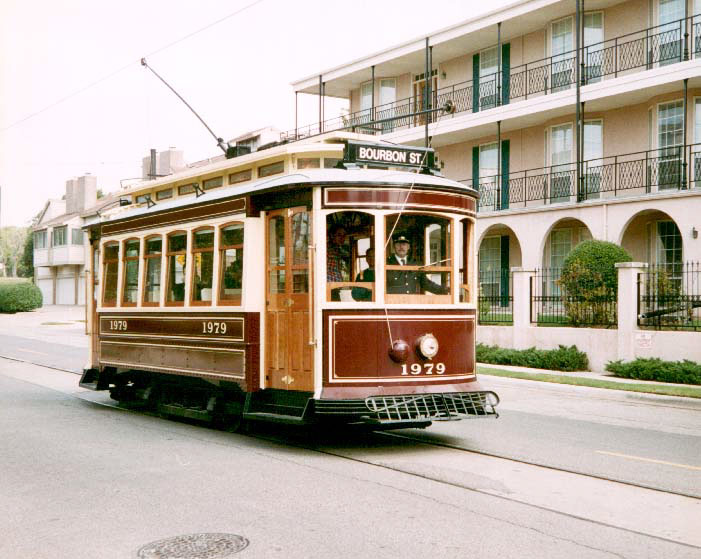 There have apparently been a lot of behind-the-scenes dealings lately in the City’s effort to convert the Kellar Branch to a hiking trail. I recently acquired a copy of the minutes of the last Recreational Trail Advocates (RTA) meeting. Under “New Business” was this interesting info (interspersed with my comments):
There have apparently been a lot of behind-the-scenes dealings lately in the City’s effort to convert the Kellar Branch to a hiking trail. I recently acquired a copy of the minutes of the last Recreational Trail Advocates (RTA) meeting. Under “New Business” was this interesting info (interspersed with my comments):
Bruce Brown reported that Randy Oliver, city manager, and Randy Ray, city attorney, have sent a counter offer to Central Illinois Railroad (CIRY) stating what would be required for them to continue to use the Keller Branch. The railroad bed must be brought up to a standard so that a train could operate at 5 miles an hour. This would probably cost $100,000 and the railroad company would have to pay 12.2 % of assessed valuation using the appraisal figures this annual rent would be between $160,000 to $190,000. The amount using the appraisal of Klopfenstein would be $204,960. The City offered to allow CIRY to use the western connection for $1.00. The railroad company dismissed this counter offer and said it would make a reply that has not yet been received. Dick Carver and Steve Van Winkle have volunteered to work with CIRY to get an agreement. The city has done everything that J.P. O’Brien and Dave Maloof have asked of them except the modified Public Convenience and Necessity (PCN) Agreement from CIRY.
So the City is putting pressure on Central Illinois Railroad Company (CIRY) to abandon the Kellar Branch by charging upwards of $200,000 annually for use of the right-of-way, plus requiring the line to be upgraded. Meanwhile, the City would subsidize use of the western connection by offering use of it for only $1 per year.
Also, Dick Carver has offered to work with CIRY — I wonder if the Park District is going to fly him into town at taxpayer expense again for that service.
I find this line rather disturbing: “The city has done everything that J.P. O’Brien and Dave Maloof have asked of them….” O’Brien owns O’Brien Steel and is still benefiting from the advantages of rail service via the Kellar Branch because he’s on the southern end of it which will not be converted to a trail. Maloof is a commercial realtor who has land interest in the Pioneer Park area. The City is taking marching orders from these two people whose businesses and livelihoods are completely unaffected by the fate of the Kellar Branch to the detriment of Carver Lumber Company and its fifty employees who are the only ones directly affected. So much for the City trying to shed its anti-business reputation.
Ray LaHood formally asked for a meeting with the Surface Transportation Board (STB), which would also include the mayors of Peoria and Peoria Heights and several city council members. STB turned Ray down stating that they didn’t want individuals appearing before them. We are still working with Dick Durbin for a favorable ruling from the STB. Bruce would like to arrange an opportunity for Randy Ray, Randy Oliver, Dick Carver and other government officials to see the 6 miles of the proposed trail.
There’s a clear, public process for making your case before the Surface Transportation Board. Having your congressman arrange back-room meetings with the board members is not part of that process. The board could ask for oral arguments if they were so inclined, but then they’d want both sides to be represented.
I think now the only political angle the RTA hasn’t tried is writing to President Bush asking for an executive order to discontinue train service on the Kellar Branch. I’m sure that will be next.
The Peoria Park District (PPD) has been asked to cut the weeds along the trail within the Peoria Heights section this fall. We will wait to hear from the PPD. The RTA might be responsible for doing one section of this area that is the flattest.
Why isn’t the Village cutting the weeds themselves? They own the property and it’s not a trail yet. Why should Park District resources be expended to cut the weeds? Does the Village not own weed cutting equipment?
Ray LaHood’s chief of staff, Tim Butler, is looking to the RTA for direction on how to proceed to further the cause of the trail. Mike Pula feels that someone needs to again talk to Carver Lumber about their opposition to using the western branch. It was suggested that perhaps Patrick Nichting and Randy Oliver could talk to them. Keith Bonds offered to contact Carver Lumber Company about its current position and what it would take to allow the Kellar Branch service to be discontinued.
Yes, by all means, keep trying to convince Carver Lumber to use the most expensive and least reliable transportation option available. As for “what it would take to allow the Kellar Branch service to be discontinued,” we’ve been over this a hundred times. Comparable rates, reliable service via the western connection. That’s what it would take, and what the City, Park District, RTA, Dick Carver, Ray LaHood, CIRY, Union Pacific, et. al., have been completely unable to deliver.
Mike Pula brought up the development off Knoxville (Trail Creek), which is touting their closeness to the trail as a selling point. We need to contact the developers on the north side and see if they would like to become more involved with supporting the extension of the Kellar Branch. Is there a volunteer to make contact with these developers?
Mike Rucker sent Rails to Trails magazine subscriptions to various government officials including Peoria City Council, Peoria Heights Trustees, Peoria Park District members and other park districts officials in the area and to Peoria and Peoria Heights libraries.
Tim O’Hanlon volunteered to get information from Rock Island and Champaign’s trail coordinators as they have been successful in the past few years implementing trails.
More lobbying. Just think what these people might accomplish if they were to put this much time and effort into something productive, like coming up with a way to keep the rail line and build the trail. I mean, they’ve been at this for, what, something like 13 years?
It seems to me that if the primary objective were to get the trail, they would have abandoned conversion of this rail corridor long ago and found an alternative route for the trail. Had they done that, they could have had the trail built years ago and been enjoying it all this time!
Keith volunteered to call Mike Friberg to try to get published a picture and information about the bridge over Knoxville Avenue.
The bridge over Knoxville — this is a pedestrian bridge that would be installed where the Kellar Branch crosses Knoxville at Junction City, near Prospect, if the trail ever gets the green light from the STB. It’s estimated to cost $2.6 million. It’s interesting that this is the only intersection that is planned to receive a bridge. At other major intersections, the Park District is planning to run the trail alongside the road to the nearest traffic signal before crossing. Why they aren’t planning to do that at Knoxville, I’m not sure, but it could have to do with the fact that Knoxville is a state route.
Meanwhile, we’re still waiting for a decision from the STB on whether CIRY or Pioneer should be allowed to operate the Kellar Branch. There is still no request pending to discontinue service on the Kellar Branch (CIRY withdrew their request). So, it looks like we’re in for several more years of haggling over this. I guess all the parties in favor of the project feel this fight is worth the expense, effort, and ever-increasing time it takes to resolve. I can think of better ways to spend taxpayer money.

 I’ve been saying it ever since the sphynxlike Kellar Branch Corridor Corporation first appeared that its clandestine efforts were going to cost the taxpayers lots of money.
I’ve been saying it ever since the sphynxlike Kellar Branch Corridor Corporation first appeared that its clandestine efforts were going to cost the taxpayers lots of money. 
 When I talked to Peoria Heights Mayor Mark Allen on Thursday, he explained to me how he sees the Kellar Branch issue. Unlike Peoria, he said, the Heights is completely landlocked. They can’t just annex land to the north or west of their community to grow. They can’t build a regional mall along the fringes of town like Peoria can. All they have for economic development is what’s available to them right now within their village.
When I talked to Peoria Heights Mayor Mark Allen on Thursday, he explained to me how he sees the Kellar Branch issue. Unlike Peoria, he said, the Heights is completely landlocked. They can’t just annex land to the north or west of their community to grow. They can’t build a regional mall along the fringes of town like Peoria can. All they have for economic development is what’s available to them right now within their village.